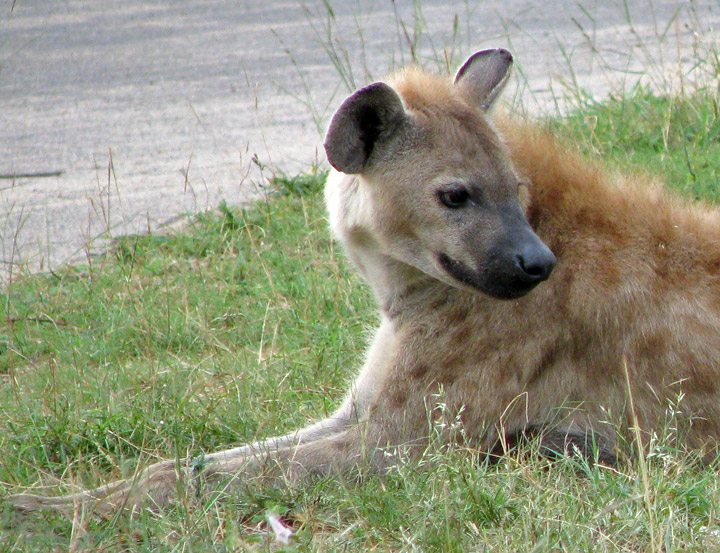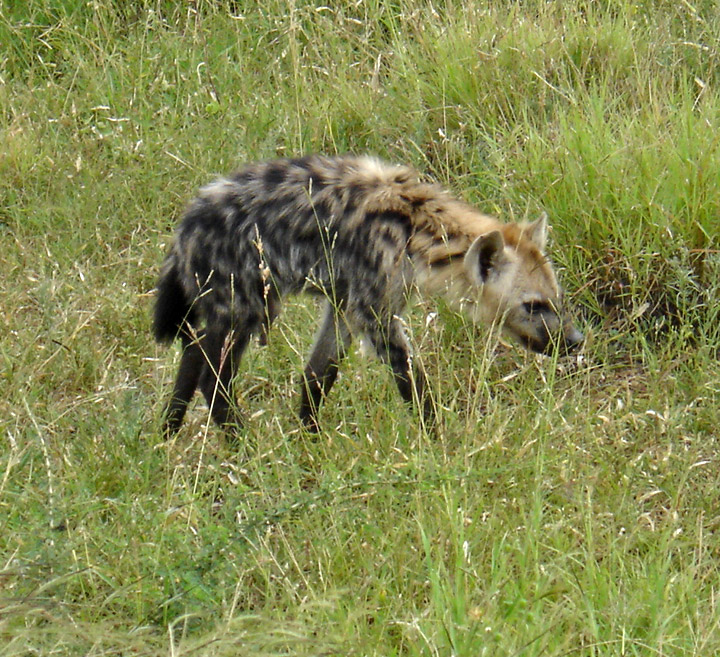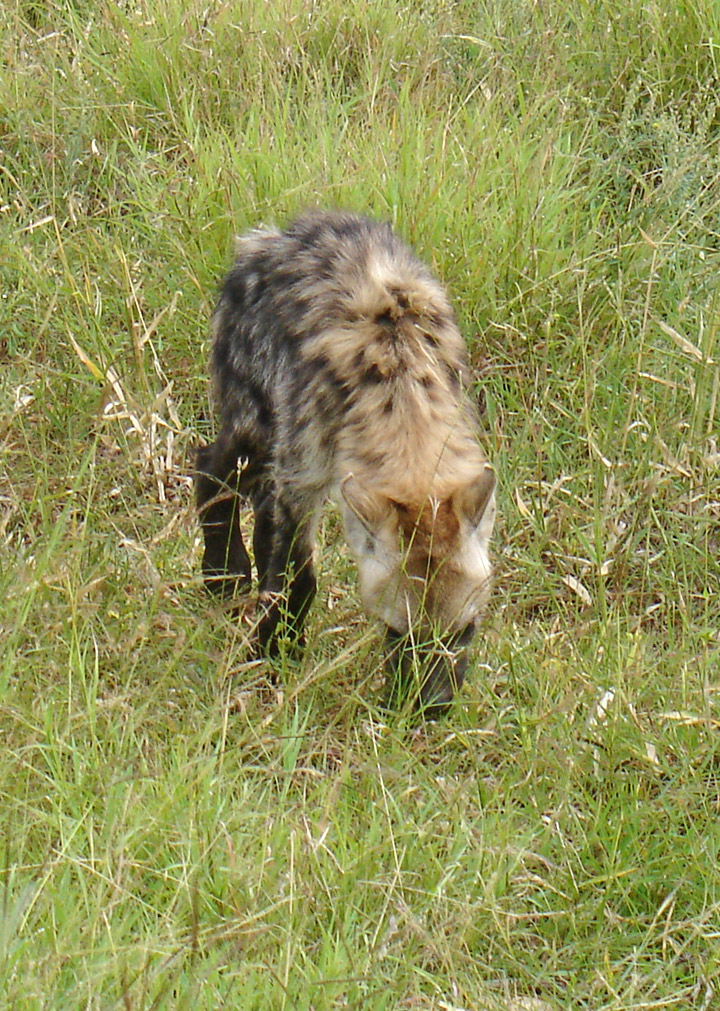

Hyena
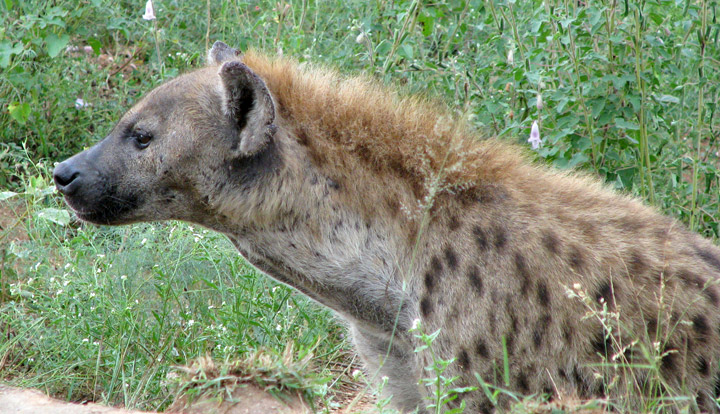
Hyenas or HyŠnas are moderately large terrestrial carnivores native to Africa, Arabia, Asia and the Indian subcontinent. They are members of the family Hyaenidae. The family comprises four species, the Aardwolf, Brown Hyena, Spotted Hyena, and Striped Hyena.
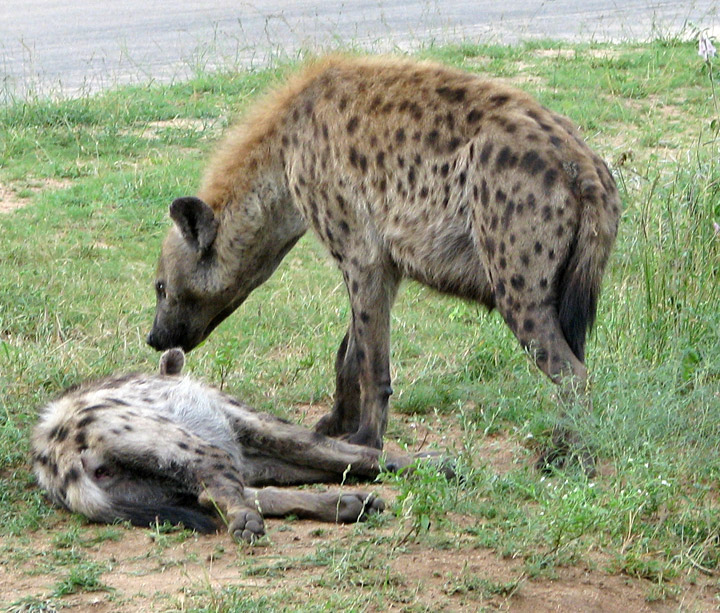
Although hyenas bear some physical resemblance to canids, they make up a
separate biological family that is most closely related to Herpestidae (the
family of mongooses and meerkats). All species have a distinctly bear-like gait
due to their front legs being longer than their back legs. The aardwolf, striped
hyena and brown hyena have striped pelts and manes lining the top of their necks
which erect when frightened. The spotted hyena's fur is considerably shorter and
is spotted rather than striped. Unlike other species, its mane is reversed
forwards. Spotted hyenas have a strong bite proportional to their size, but the
view that they have the strongest bite is a myth, and a number of other animals
(including the Tasmanian devil) have proportionately stronger bites.
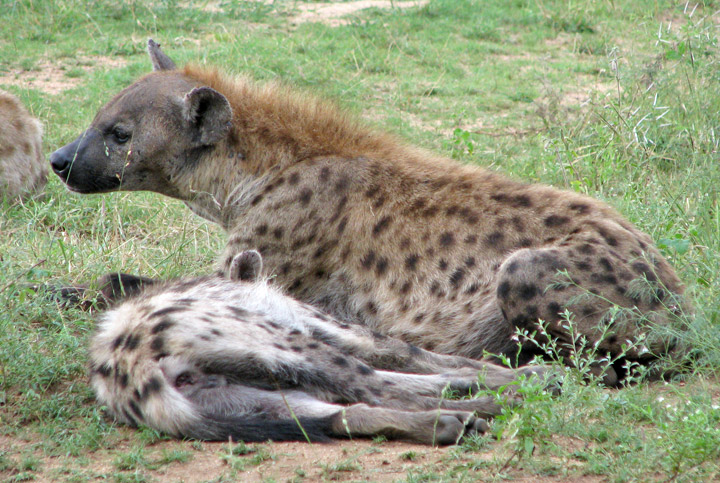
Spotted Hyenas, and, to a lesser extent, Striped and Brown Hyenas, have powerful
carnassial teeth adapted for cutting flesh and crushing premolars for crushing
bone. The Aardwolf has greatly reduced cheek teeth, that are sometimes absent in
the adult, but otherwise has the same dentition as the other three species.
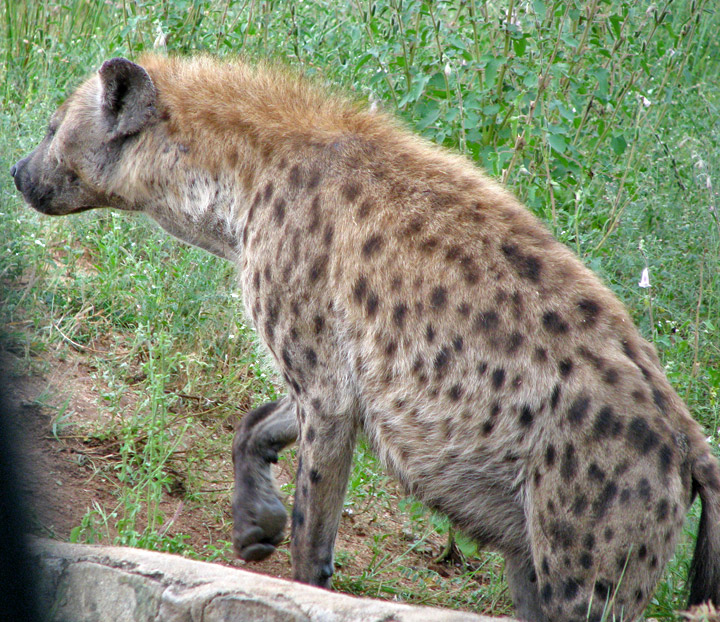
Hyenas are highly intelligent animals, and some scientists claim they are of
equal intelligence to certain apes. One indication of hyena intelligence is that
they will move their kills closer to each other to protect them from scavengers;
another indication is their strategic hunting methods.

The majority of hyena species show little sexual dimorphism, usually with males
being only slightly larger than the females. The spotted hyena is an exception
to this as females are larger than the males. One unusual feature of the spotted
hyena is that females have an enlarged clitoris called a pseudo-penis, demi-penis
or sometimes mistakenly referred to as a nanophallus. Female hyenas give birth,
copulate, and urinate through their protruding genitalia, which stretches to
allow the male penis to enter for copulation, and it also stretches during
birth. The anatomical position of the genitalia gives females total sexual
control over who is allowed to mate with them. Researchers originally thought
that one cause of this characteristic of the genitals was androgens that were
introduced to the fetus very early on in its development. However, it was
discovered that when the androgens were held back from the fetus, the
development of the female genitalia was not altered.
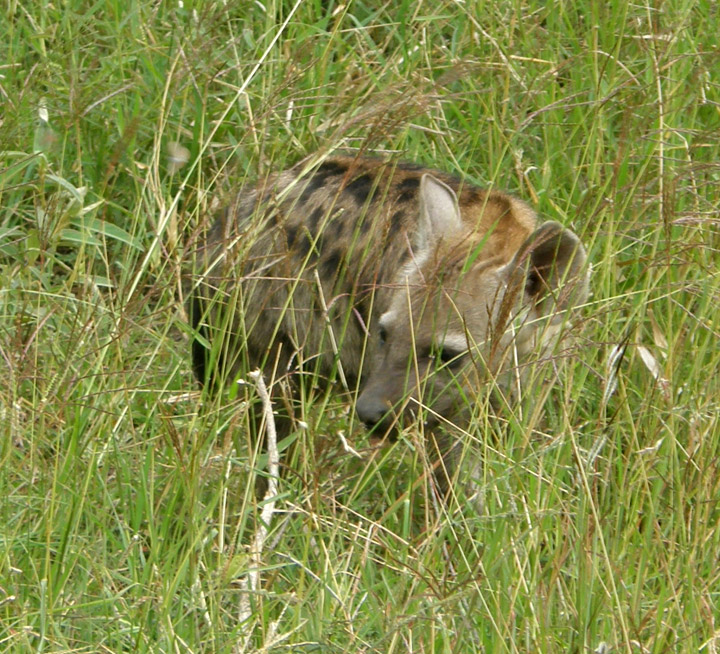
All species excrete an oily, yellow substance from their anal glands onto
objects to mark their territories. When scent marking, the anal pouch is turned
inside out, or everted. Hyenas also do this as a submissive posture to more
dominant hyenas. Genitals, the anal area, and the anal glands are sniffed during
greeting ceremonies in which each hyena lifts its leg and allows the other to
sniff its anal sacks and genitals. All four species maintain latrines far from
the main denning area where dung is deposited. Scent marking is also done by
scraping the ground with the paws, which deposits scent from glands on the
bottoms of the feet. Hyenas do not raise their legs when urinating as male or
dominant canids do.
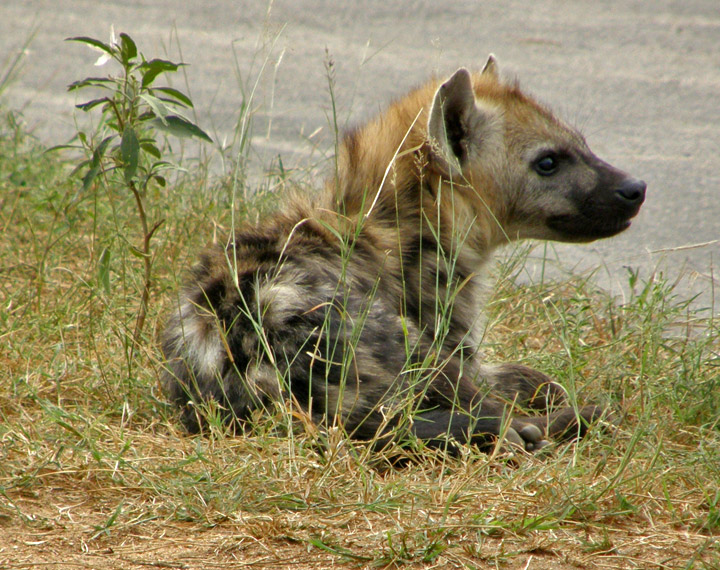
Unlike the canids, hyenas do not regurgitate or carry back food for their young.
Text from Wikipedia
